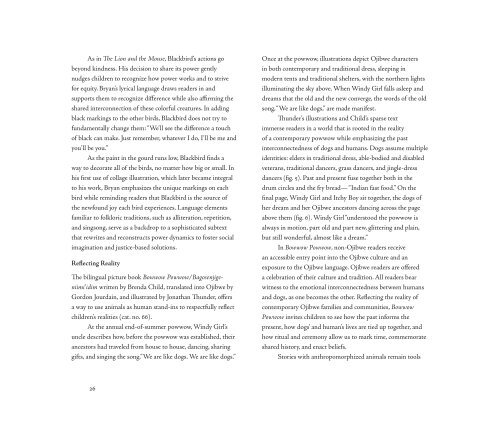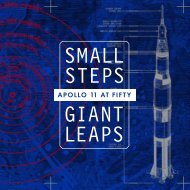Animals Are Us: Anthropomorphism in Children’s Literature; Celebrating the Peter J. Solomon Collection
Why do we tell stories to children through and about animals? Are there reasons why we shouldn’t? Animals Are Us invites explores these questions and more through influential historic examples of anthropomorphism in dialogue with contemporary books drawn from the collection of Peter J. Solomon (Harvard College Class of 1960, MBA 1963) and the holdings of Houghton Library. The exhibition invites you to engage critically with animal anthropomorphism, and delight in the artfulness of this enduring literary genre. Catalog of an exhibition on view at Houghton Library, Harvard University, September 1, 2021 - January 7, 2022.
Why do we tell stories to children through and about animals? Are there reasons why we shouldn’t? Animals Are Us invites explores these questions and more through influential historic examples of anthropomorphism in dialogue with contemporary books drawn from the collection of Peter J. Solomon (Harvard College Class of 1960, MBA 1963) and the holdings of Houghton Library. The exhibition invites you to engage critically with animal anthropomorphism, and delight in the artfulness of this enduring literary genre.
Catalog of an exhibition on view at Houghton Library, Harvard University, September 1, 2021 - January 7, 2022.
You also want an ePaper? Increase the reach of your titles
YUMPU automatically turns print PDFs into web optimized ePapers that Google loves.
As <strong>in</strong> The Lion and <strong>the</strong> Mouse, Blackbird’s actions go<br />
beyond k<strong>in</strong>dness. His decision to share its power gently<br />
nudges children to recognize how power works and to strive<br />
for equity. Bryan’s lyrical language draws readers <strong>in</strong> and<br />
supports <strong>the</strong>m to recognize difference while also affirm<strong>in</strong>g <strong>the</strong><br />
shared <strong>in</strong>terconnection of <strong>the</strong>se colorful creatures. In add<strong>in</strong>g<br />
black mark<strong>in</strong>gs to <strong>the</strong> o<strong>the</strong>r birds, Blackbird does not try to<br />
fundamentally change <strong>the</strong>m: “We’ll see <strong>the</strong> difference a touch<br />
of black can make. Just remember, whatever I do, I’ll be me and<br />
you’ll be you.”<br />
As <strong>the</strong> pa<strong>in</strong>t <strong>in</strong> <strong>the</strong> gourd runs low, Blackbird f<strong>in</strong>ds a<br />
way to decorate all of <strong>the</strong> birds, no matter how big or small. In<br />
his first use of collage illustration, which later became <strong>in</strong>tegral<br />
to his work, Bryan emphasizes <strong>the</strong> unique mark<strong>in</strong>gs on each<br />
bird while rem<strong>in</strong>d<strong>in</strong>g readers that Blackbird is <strong>the</strong> source of<br />
<strong>the</strong> newfound joy each bird experiences. Language elements<br />
familiar to folkloric traditions, such as alliteration, repetition,<br />
and s<strong>in</strong>gsong, serve as a backdrop to a sophisticated subtext<br />
that rewrites and reconstructs power dynamics to foster social<br />
imag<strong>in</strong>ation and justice-based solutions.<br />
Reflect<strong>in</strong>g Reality<br />
The bil<strong>in</strong>gual picture book Bowwow Powwow/Bagosenjigeniimi’idim<br />
written by Brenda Child, translated <strong>in</strong>to Ojibwe by<br />
Gordon Jourda<strong>in</strong>, and illustrated by Jonathan Thunder, offers<br />
a way to use animals as human stand-<strong>in</strong>s to respectfully reflect<br />
children’s realities (cat. no. 66).<br />
At <strong>the</strong> annual end-of-summer powwow, W<strong>in</strong>dy Girl’s<br />
uncle describes how, before <strong>the</strong> powwow was established, <strong>the</strong>ir<br />
ancestors had traveled from house to house, danc<strong>in</strong>g, shar<strong>in</strong>g<br />
gifts, and s<strong>in</strong>g<strong>in</strong>g <strong>the</strong> song,“We are like dogs. We are like dogs.”<br />
Once at <strong>the</strong> powwow, illustrations depict Ojibwe characters<br />
<strong>in</strong> both contemporary and traditional dress, sleep<strong>in</strong>g <strong>in</strong><br />
modern tents and traditional shelters, with <strong>the</strong> nor<strong>the</strong>rn lights<br />
illum<strong>in</strong>at<strong>in</strong>g <strong>the</strong> sky above. When W<strong>in</strong>dy Girl falls asleep and<br />
dreams that <strong>the</strong> old and <strong>the</strong> new converge, <strong>the</strong> words of <strong>the</strong> old<br />
song, “We are like dogs,” are made manifest.<br />
Thunder’s illustrations and Child’s sparse text<br />
immerse readers <strong>in</strong> a world that is rooted <strong>in</strong> <strong>the</strong> reality<br />
of a contemporary powwow while emphasiz<strong>in</strong>g <strong>the</strong> past<br />
<strong>in</strong>terconnectedness of dogs and humans. Dogs assume multiple<br />
identities: elders <strong>in</strong> traditional dress, able-bodied and disabled<br />
veterans, traditional dancers, grass dancers, and j<strong>in</strong>gle-dress<br />
dancers (fig. 5). Past and present fuse toge<strong>the</strong>r both <strong>in</strong> <strong>the</strong><br />
drum circles and <strong>the</strong> fry bread— “Indian fast food.” On <strong>the</strong><br />
f<strong>in</strong>al page, W<strong>in</strong>dy Girl and Itchy Boy sit toge<strong>the</strong>r, <strong>the</strong> dogs of<br />
her dream and her Ojibwe ancestors danc<strong>in</strong>g across <strong>the</strong> page<br />
above <strong>the</strong>m (fig. 6). W<strong>in</strong>dy Girl “understood <strong>the</strong> powwow is<br />
always <strong>in</strong> motion, part old and part new, glitter<strong>in</strong>g and pla<strong>in</strong>,<br />
but still wonderful, almost like a dream.”<br />
In Bowwow Powwow, non-Ojibwe readers receive<br />
an accessible entry po<strong>in</strong>t <strong>in</strong>to <strong>the</strong> Ojibwe culture and an<br />
exposure to <strong>the</strong> Ojibwe language. Ojibwe readers are offered<br />
a celebration of <strong>the</strong>ir culture and tradition. All readers bear<br />
witness to <strong>the</strong> emotional <strong>in</strong>terconnectedness between humans<br />
and dogs, as one becomes <strong>the</strong> o<strong>the</strong>r. Reflect<strong>in</strong>g <strong>the</strong> reality of<br />
contemporary Ojibwe families and communities, Bowwow<br />
Powwow <strong>in</strong>vites children to see how <strong>the</strong> past <strong>in</strong>forms <strong>the</strong><br />
present, how dogs’ and human’s lives are tied up toge<strong>the</strong>r, and<br />
how ritual and ceremony allow us to mark time, commemorate<br />
shared history, and enact beliefs.<br />
Stories with anthropomorphized animals rema<strong>in</strong> tools<br />
26



